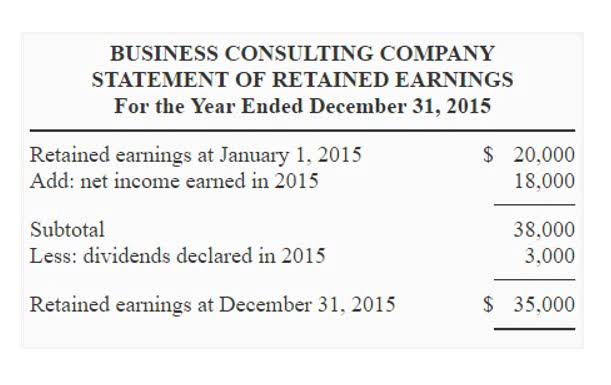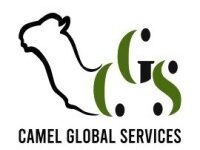
Consistent with best practices, when a wine is sold, the cost of having made that specific wine is recorded as COGS, concurrently with recording the revenue from the sale of that wine. There can be other items that impact COGS specific to the accounting method used as well as other specific business cases that can be discussed further with your CPA. The difference between the revenue generated and the wine’s COGS is ultimately the gross profit on that wine. In this article, we’ll break down how to obtain the information you need to understand your profits and costs—including relevant accounting basics and strategies to categorize various production costs. Wine accountants know that to operate a successful winery, expenditures must be capitalized throughout the growing process. When commercial production begins, the accountant can begin to account for both expenditures and income on the ledger.

Our mission is to see your small winery thrive.
This means paying attention to all cost elements, including indirect expenses like labor, occupancy costs, and utility expenses related to production. One common challenge we see for wineries is not recording enough details during financial transactions. This typically starts at the basic transaction level, where important information about costs and quantities often gets overlooked. And two of the most common places we see errors in data are in cost accounting and the tracking of the Cost of Goods Sold (COGS). If you’re selling wine within a short time, like 24 months, you’d actually need to create 56% more wine inventory this year than what you’re selling in order to keep up with growth. This means you need way more cash to make all that wine than what you are getting from sales.
Wine Costing & Inventory Support
- In reality, there are two types of accounting going on at the same time in the wine business.
- In California, he met his Cannonball co-founder, Dennis Hill, who has been in the winemaking business for 35 years and was a top winemaker at Blackstone Winery.
- It relies on accurate data input and recordkeeping to trace costs through the manufacturing process.
- You can think of the chart of accounts as a table of contents for your finances.
- This method values inventory based on the average cost of all similar items available during the period.
- Lastly, most vineyard owners want to build a production facility and tasting room, since 90% of revenue will come through your tasting room.
- COGS includes the cost of the grapes, the cost of production, and the cost of packaging and shipping.
The key is to start with a sound framework, only create the accounts you need, and then build out from there. When looking at your financial reports, we recommend always starting with a collapsed view, to get a high-level understanding of your business performance. After https://www.bookstime.com/ that, you can drill down into subaccounts to see what is really driving the results you are seeing at a high level. IC-DISCs do not have employees or offices and are not taxed at the federal level; instead, they charge a sales commission from the exporting winery.
Get funding for your wine business
When you view your reports in a collapsed form, all of the subaccounts will fold up into the parent account. QuickBooks will allow you to do this, as well as most other financial reporting platforms including Fathom, which is the platform we use for performance reporting with our clients. The vineyard origin indicates whether a particular appellation can be attached to the grapes produced in that region. Harvested grapes are weighed at a certified weigh station so that a record is available about tonnage, grape varietal, and vineyard origin. Such records provide important ongoing accounting and internal control data.
Other Expenses
Isolating the costing pools at various stages of production aids in allocating period overhead costs more precisely and allows for more accurate tracking of the component costs of blended wines. Grape costs may be recorded in a separate account initially, but these costs become part of the bulk wine inventory along with additional crush, fermentation, and cellar costs. The bulk wine cost with additional storage and overhead is combined with the cost of packaging materials used along with bottling labor to derive the individual unit cost of the finished wine.
- Based on a built-in chart of accounts, transactions are organized to facilitate easy translation to your accounting software.
- And two of the most common places we see errors in data are in cost accounting and the tracking of the Cost of Goods Sold (COGS).
- Vertically integrated wineries own vineyards that may yield all the grapes needed for internal wine production; wineries that acquire grapes, juice, or even bulk wine from outside vendors are called négociants.
- These include costs of grape acquisition, labor, packaging materials, overheads, and cellar operations.
- Like any other business, the wine industry must also analyze and report its finances timely.
- Financial reporting operates under GAAP guidelines and allows your company to remain compliant with policy boards.
- The wine industry proved the perfect nexus of agriculture, art, and entrepreneurship.
Subscription pricing means that you will always know what you are paying and you won’t get a bill every time you pick up the phone to call us. We’ll start by having a conversation with you to see where you’re at, what you need, and how we can help. From there, we’ll give you a proposal outlining our recommended services. We are here to help make the finance part work, so that you can build a successful winery that will sustain itself, and you, for generations to come. Remember, your financial partners are here to help you meet your business goals and everyone needs to be working together towards the same goals. Now, let’s relate this to the precise tracking of the Cost of Goods Sold (COGS).

Your partner in building a thriving winery business.
If you operate a vineyard in addition to winery, include those labor expenses in your total labor cost. You will need to decide how much to spend on production overall, including how much to spend on grapes, glass, label, closures, and wine accounting more. Then, you must decide how much money is going to be allocated between different departments to run the business and sell the wine. Finally, you must track how much is spent on all the other operational costs of your winery.
Why does the winery chart of accounts matter?
Regardless of their origin, harvested grapes are weighed at a certified weigh station so that a record is available about tonnage, grape varietal, and vineyard origin. Such records provide important ongoing accounting and internal control data about the grapes throughout the production process. Production costs should be allocated to the various bulk wine in the cellar based on the type of processing activity and the stage of the wine in the process. Crush and ferment costs, which may include payroll, supplies, allocated overhead, and depreciation or rent related to crush equipment, should only be allocated to the current vintage crushed. On the other hand, cellar aging costs are typically shared by all wines in the cellar.
Therefore, experts must conduct account analysis in wineries, making it complicated. Like any other business, the wine industry must also analyze and report its finances timely. This is essential for proper decision-making and evaluation of the company’s performance.
